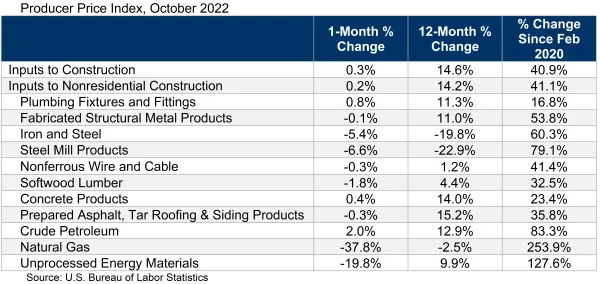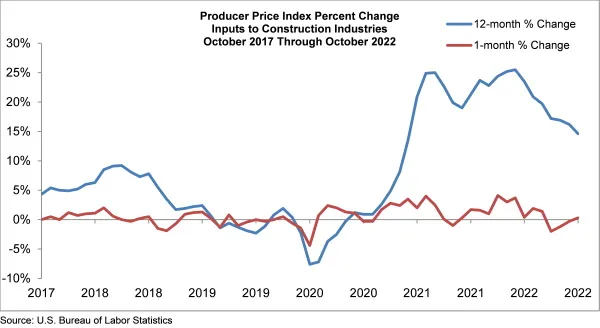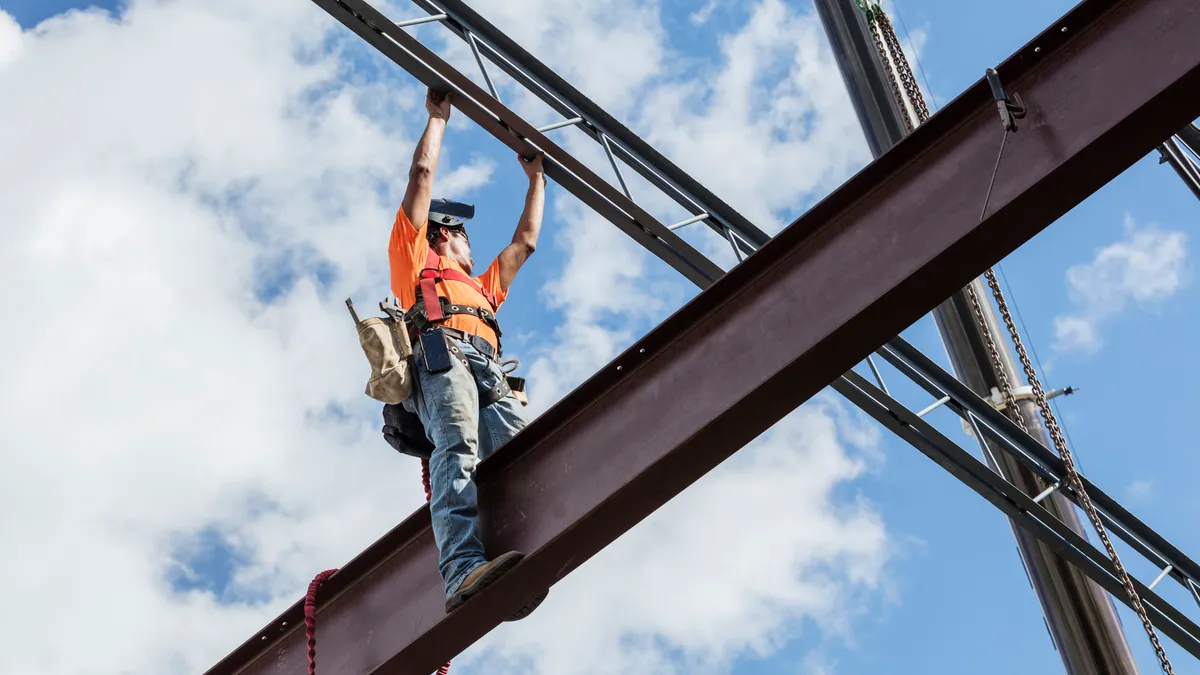Dive Brief:
- Construction input prices again inched higher in October, rising 0.3% overall from September, largely due to increased petroleum prices, but relief may be in sight, according to an analysis of Bureau of Labor Statistics data released Tuesday by Associated Builders and Contractors.
- Inputs to nonresidential construction ticked up 0.2%, with increases in just three of 11 subcategories – petroleum, concrete and plumbing fixtures – according to Anirban Basu, ABC's chief economist.
- Basu predicted that peak inflation was behind contractors, based on the numbers, and that he expected the Federal Reserve to slow down the interest rate hikes it has been implementing to curb rampant inflation.
Dive Insight:
Indeed, some categories, including steel mill products, experienced sharp price declines for the month, falling 6.6%. Raw iron and steel likewise fell 5.4% month-to-month, while softwood lumber dropped 1.8%, according to the analysis. Natural gas prices saw the largest drop, plunging 37.8% in October.

The declines come after nearly two years of unchecked increases for construction products, a trend which is apparent in year-over-year numbers.
Construction input prices are up 14.6% from a year ago, while nonresidential construction input prices are 14.2% higher, according to the ABC analysis.
Basu said that the numbers were a “welcome development for contractors,” as only 31% of contractors expected profit margins to rise over the next six months. However, he emphasized that contractors should still take a “wait-and-see approach” to the next few months until it became apparent that peak inflation had passed.

“For weeks, the conventional notion has been that peak inflation is behind us,” Basu said in the release. “Today’s PPI report supports this and gives credence to the idea that the Federal Reserve will soon slow interest rate increases.”
Despite that measured optimism, the pressures contractors have faced since February 2020 have far from abated, as nonresidential construction input prices are up 41.1% since the pandemic began.












